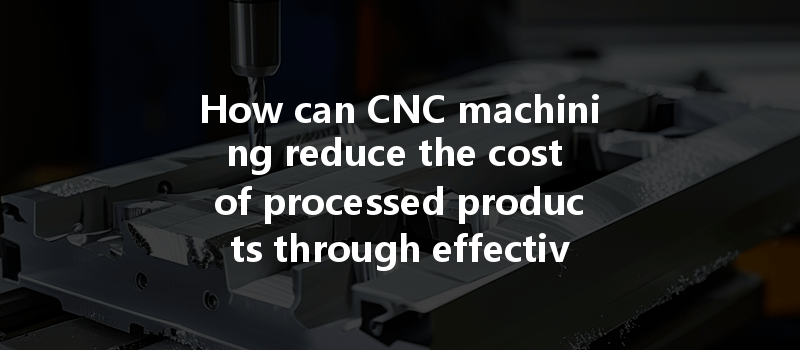: The Power of CNC Machining in Cost Efficiency
Did you know that, according to Grand View Research, the global CNC machining market is projected to reach $100.36 billion by 2025? With such rapid growth, the importance of refining cost management strategies cannot be overstated, especially as businesses strive for competitive advantage. CNC (Computer Numerical Control) machining has revolutionized manufacturing by enhancing precision and lowering costs. However, many companies still grapple with high overheads and inefficient processes that hinder profitability. In this comprehensive guide, we’ll delve deep into how effective cost control strategies in CNC machining can lead to significant reductions in the prices of processed products.
Understanding Cost Control in CNC Machining

At its core, cost control is a method used by businesses to manage their expenses more efficiently. It involves a series of processes aimed at reducing costs while maintaining the quality and quantity of the products being manufactured. In the context of CNC machining, this can involve everything from material selection and machine setup to labor optimization and waste reduction.
To effectively control costs in CNC machining, businesses must focus on several key areas:

Strategies for Reducing Costs in CNC Machining
Effective material management can significantly reduce costs in CNC machining. Here are several strategies to optimize material usage:
Having a well-trained workforce is central to reducing costs effectively. Here’s how training contributes to cost control:
Lean manufacturing focuses on maximizing value while minimizing waste, making it a perfect fit for CNC machining environments. Key lean principles include:
Keeping machinery in peak condition is vital for cost control. Consider implementing these practices:

Technological advancements can play a crucial role in reducing costs for CNC machining. Here are several tools and technologies to consider:
Quality control is essential for preventing product rejections and recalls, which can be costly. To enhance quality control:
The Role of Supply Chain Management in Cost Control
Effective supply chain management is one of the most critical factors influencing manufacturing costs. To optimize supply chain costs associated with CNC machining:
Case Studies: Success Stories of Cost Control in CNC Machining
Case Study 1: Automotive Component Manufacturer
A leading automotive component manufacturer faced rising production costs and was struggling to remain competitive. By implementing lean manufacturing principles and investing in new CAD/CAM software, they were able to reduce machining times by 20%. This optimized material usage and improved throughput led to a 15% reduction in costs over two years.
Case Study 2: Aerospace Parts Production
An aerospace manufacturer focused on precision parts had high overhead due to exorbitant material and labor costs. By reevaluating their material selection and investing in skilled labor training, they achieved a 25% savings on raw materials. Additionally, regular machine maintenance schedules cut downtime by 30%, further contributing to overall cost reductions.
The Impact of Cost Control on Profitability
Effective cost control measures can significantly affect a company’s bottom line. By embracing these practices, businesses can enjoy:
: The Path Forward
In conclusion, controlling costs in CNC machining is vital for ensuring profitability and sustainability in today’s competitive landscape. By optimizing material usage, investing in skilled labor, implementing lean principles, maintaining equipment, leveraging advanced technology, and managing the supply chain effectively, manufacturers can significantly reduce expenses while maintaining quality.
As we’ve explored, the benefits of applying these strategies can lead to profound changes in overall operational efficiency and success. In a world where every penny counts, reconsidering your CNC machining processes and focusing on cost control may not only be the key to surviving— it could pave the way for thriving.
As a final reminder, an unsustainable approach to cost management can have lasting impacts on both production and quality. By adopting the techniques discussed in this blog, businesses are not just cutting costs; they are investing in their future. The path to competitive advantage lies in understanding that effective cost control is integral to the success of any CNC machining operation.




